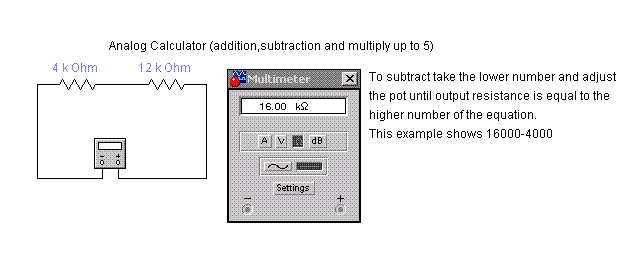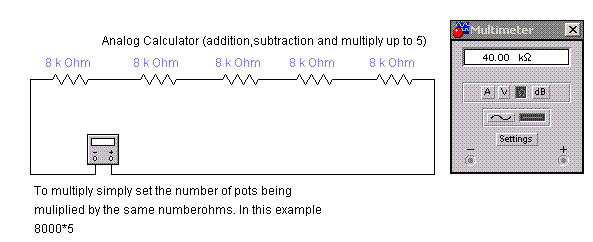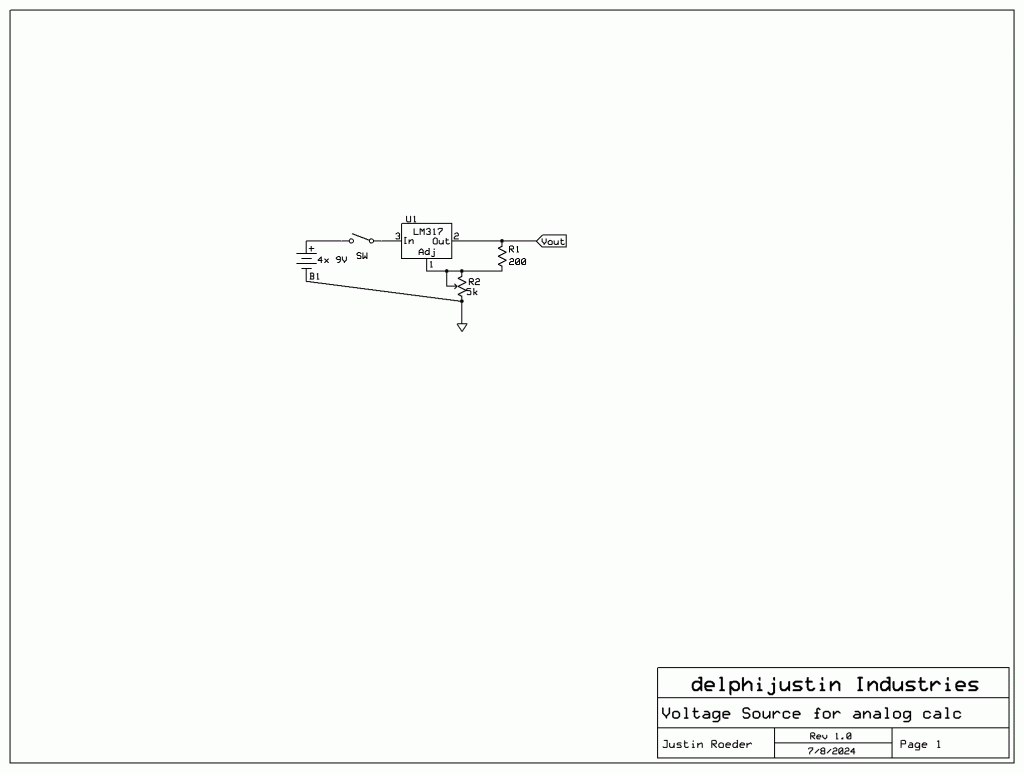Here are ways to do addition, subtraction, multiply and divide using a multimeter.
Addition
Addition is very simple! To do it just connect some pots in series. With series resistors their resistance adds up.

Subtraction

NOTE: If there are 3 or more pots in series, just set them all the way down to 0 ohms.
Multiply

Again if there are any unused pots set them to 0
Divide
In this animated circuit shows you how the resistors divide the voltage. The resistance isn’t important. You probably want nothing lower than 2.2k(for 32.5v, which is probably the max my adjustable voltage source will give you.) To figure out the current rating use this equation $$I_{max}=\frac{V_{in}}{R}$$ To use that circuit first measure the voltage source output(The numerator of the fraction). Then tap into the resistor chain(the denominator of the fraction). The voltage output from the resistor chain will be the Quotient. You can use any number of fixed resistors and any reasonable value as long is impedance doesn’t go too high where the current is too weak for your meter to pickup. You also don’t want to go too low where your batteries leak or explode or even the resistors could catch on fire if the wattage goes over the rated resistor wattage.
The adjustable voltage source

Here it is. This will give the numerator any number between 1.25 to 32.5. I plan on powering it from 4x 9v batteries. This will provide 36vdc of power. You can use anything from 40v or less. If anything higher is needed you can build a rectifier diode chain, I’m not sure if it’s accuracy is any good. Any adjustable linear voltage regulator is good for this purpose To change the voltage range on the LM317 click here.

 Circuit Simulator
Circuit Simulator